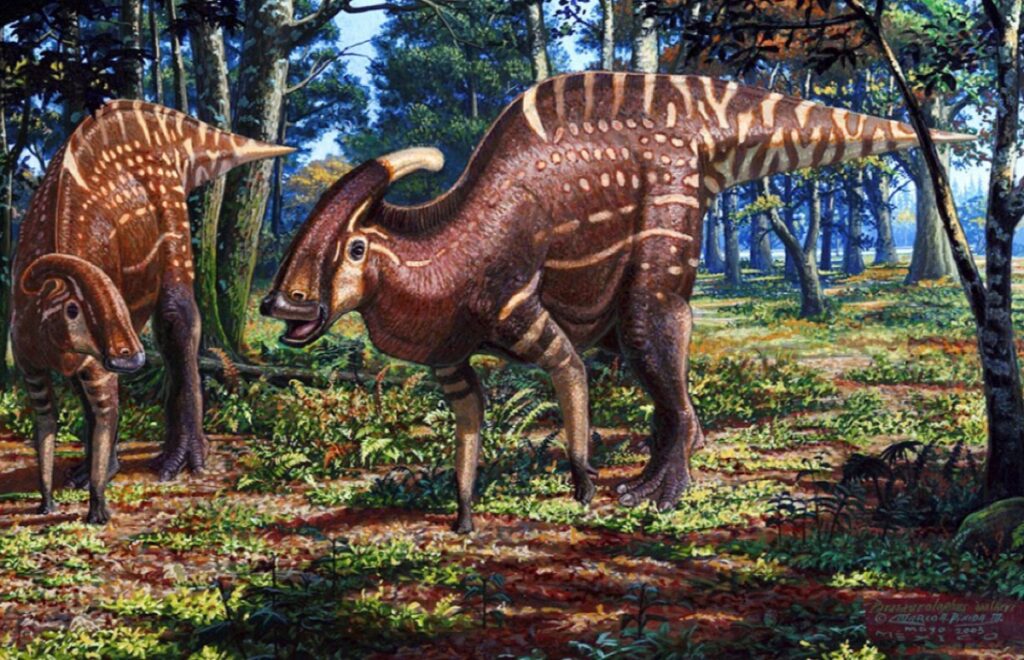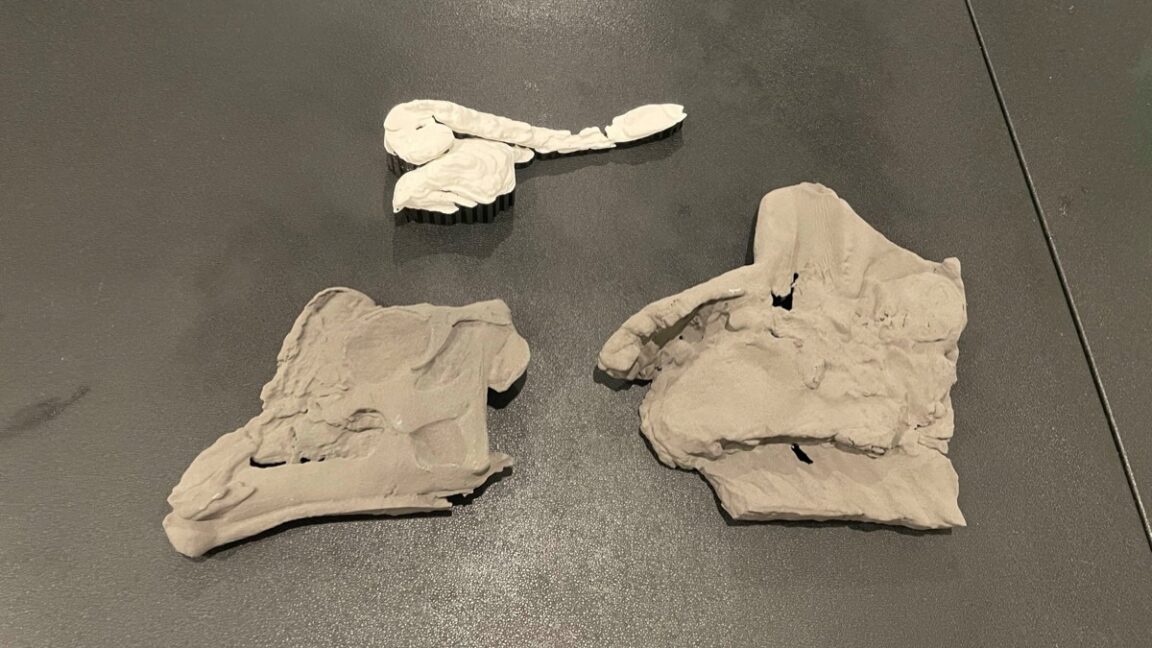Preliminary model suggests the dinosaur bellowed like a large trumpet or saxophone, or perhaps a clarinet.
The duck-billed dinosaur Parasaurolophus is distinctive for its prominent crest, which some scientists have suggested served as a kind of resonating chamber to produce low-frequency sounds. Nobody really knows what Parasaurolophus sounded like, however. Hongjun Lin of New York University is trying to change that by constructing his own model of the dinosaur's crest and its acoustical characteristics. Lin has not yet reproduced the call of Parasaurolophus, but he talked about his progress thus far at a virtual meeting of the Acoustical Society of America.
Lin was inspired in part by the dinosaur sounds featured in the Jurassic Park film franchise, which were a combination of sounds from other animals like baby whales and crocodiles. “I’ve been fascinated by giant animals ever since I was a kid. I’d spend hours reading books, watching movies, and imagining what it would be like if dinosaurs were still around today,” he said during a press briefing. “It wasn’t until college that I realized the sounds we hear in movies and shows—while mesmerizing—are completely fabricated using sounds from modern animals. That’s when I decided to dive deeper and explore what dinosaurs might have actually sounded like.”
A skull and partial skeleton of Parasaurolophus were first discovered in 1920 along the Red Deer River in Alberta, Canada, and another partial skull was discovered the following year in New Mexico. There are now three known species of Parasaurolophus; the name means "near crested lizard." While no complete skeleton has yet been found, paleontologists have concluded that the adult dinosaur likely stood about 16 feet tall and weighed between 6,000 to 8,000 pounds. Parasaurolophus was an herbivore that could walk on all four legs while foraging for food but may have run on two legs.
It's that distinctive crest that has most fascinated scientists over the last century, particularly its purpose. Past hypotheses have included its use as a snorkel or as a breathing tube while foraging for food; as an air trap to keep water out of the lungs; or as an air reservoir so the dinosaur could remain underwater for longer periods. Other scientists suggested the crest was designed to help move and support the head or perhaps used as a weapon while combating other Parasaurolophus. All of these, plus a few others, have largely been discredited.
A “near-crested lizard”

The most intriguing hypothesis is that the crest served as a resonating chamber, first proposed in 1931 by Swedish paleontologist Carl Wiman, who noted that the crest's structure was similar to that of a swan and thus could have been used for vocalization. Lin stumbled upon a 1981 paper by David Weishampel expanding on the notion, predicting that the dinosaur's calls would have fallen in the frequency range of 55 to 720 Hertz. Weishampel's model treated the crest as an open pipe/closed pipe system. Lin did a bit more research, and a 2013 paper convinced him that Weishampel's model was due for an update.
Lin created a physical setup to empirically test his own mathematical model of what might be happening acoustically inside Parasaurolophus' crest, dubbed the "Linophone," although it is not a perfect anatomical replica of the dinosaur's crest. The setup consisted of two connected open pipes designed to mimic the vibrations of vocal cords. Lin conducted frequency sweeps using a speaker to generate the sounds and recorded the resonance data with microphones at three different locations. An oscilloscope transferred that data back to his computer.
He found that the crest did indeed seem to be useful for resonance, similar to the crests in modern birds. "If I were to guess what this dinosaur sounded like, it would be a brass instrument like a huge trumpet or saxophone," said Lin, based on the simple pipe-like structure of his model. However, the presence of soft tissue-like vocal cords could mean that the sound was closer to that of a clarinet.
Lin is still refining his mathematical model, and he thinks he should be able to extend it to studying other creatures with similar vocal structures."Once we have a working model, we'll move toward using fossil scans" to further improve it, Lin said, although he noted that one challenge is that soft tissue like vocal cords are often poorly preserved. His ultimate goal is to re-create the sound of the Parasaurolophus—and perhaps even design his own accessible plug-in to add dinosaur sounds to his musical compositions.
Hope you enjoyed this news post.
Thank you for appreciating my time and effort posting news every day for many years.
2023: Over 5,800 news posts | 2024 (till end of October): 4,832 news posts
RIP Matrix | Farewell my friend ![]()



3175x175(CURRENT).thumb.jpg.b05acc060982b36f5891ba728e6d953c.jpg)
Recommended Comments
There are no comments to display.
Join the conversation
You can post now and register later. If you have an account, sign in now to post with your account.
Note: Your post will require moderator approval before it will be visible.